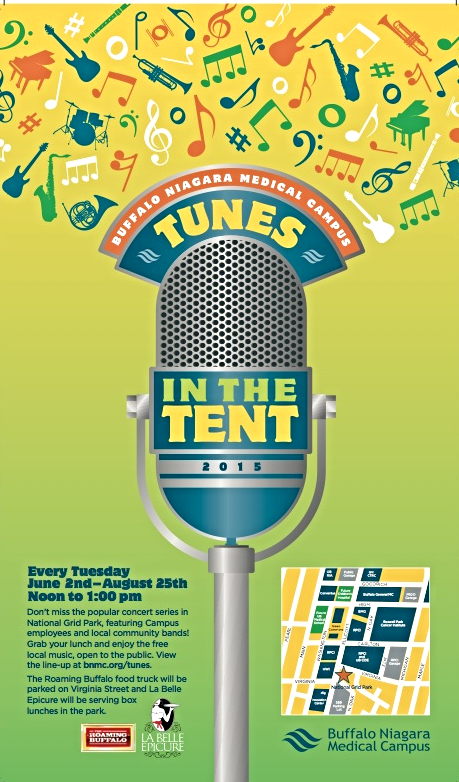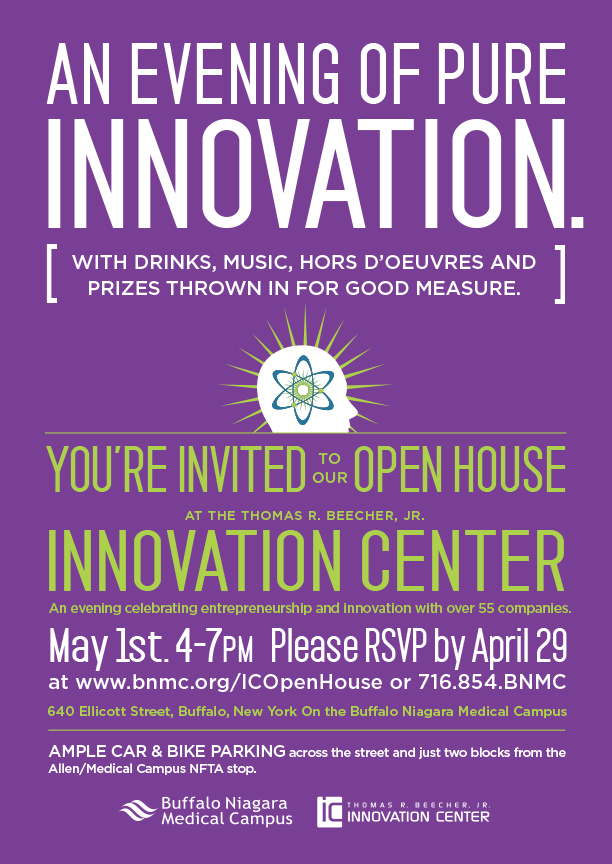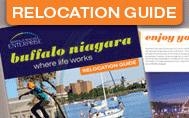
(Photo from The Buffalo News)
Published: 03/3/2013, 11:54 PM Updated: 03/3/2013, 11:54 PM
Buffalo News Article: The Buffalo Niagara Medical Campus – and the opportunity for growth it promises – is helping UB attract some of the country’s top doctors to its medical school faculty.
BY: Jay Rey /Buffalo News Staff Reporter
Recruiting top doctors and medical researchers to Buffalo is not unlike the Bills or Sabres going after blue-chip free agents.
Buffalo may not be high on their list of destinations – or on their list at all – when bigger, warmer or more lucrative markets are out there.
Buffalo? thought Dr. Andrew Talal.
Dr. Gil Wolfe was hesitant, too.
And Dr. John Tomaszewski was sure Buffalo wasn’t for him, even before he stepped off the plane.
That’s part of the recruiting process the University at Buffalo is going through right now as it grows its School of Medicine and Biomedical Sciences.
Over the next three years, UB plans to hire more than 100 full-time medical faculty members in preparation for the 2016 opening of its new medical school, which will serve as a linchpin for an emerging Buffalo Niagara Medical Campus.
But luring smart, high-priced medical talent to the region isn’t as impossible as you might think.
If you can get them to visit – that’s the key – Buffalo can convince them it is a city on the rise and they can be a part of building something special.
“People want to be in a place that’s moving forward with a vision,” said UB President Satish Tripathi. “The way I feel is, if we are able to clearly state our vision and provide them the resources to succeed, people will come.”
“You got to get them on the airplane,” said Dr. Anne Curtis, chairwoman of the department of medicine at UB, who was recruited a few years ago. “Get them on the airplane and get them here, and then we can do OK.”
That’s why Talal, Wolfe and Tomaszewski eventually came around to Buffalo, with dozens more expected to follow.
“I began to understand that there really is a new day in town,” said Tomaszewski, who came from Philadelphia more than a year ago.
The added faculty will allow UB to increase enrollment at the medical school, from which the region gets many of its future physicians.
In addition, these newly hired doctors – who will set up practices and labs and hold positions at area hospitals – will bring some needed depth and breadth to Buffalo’s medical community, as UB targets specialists in areas where the region has a shortage.
It’s helping set the stage for a better, 21st-century health care system, where people from the region can be treated for most any condition by local doctors, said Michael Cain, vice president of health sciences and dean of the medical school.
And in a way, it serves as a reminder that Buffalo really is making progress, especially when the community’s Rust Belt image is seen through the fresh eyes of these newcomers.
“We fell in love with the city,” said Dr. Anthony Martinez, an associate professor of medicine, who moved to Buffalo from San Diego in December. “It just feels like there’s something going on here. It’s hard to describe, it’s just something you feel.”
But first, you have to get them to Buffalo.
Seeing the potential
Actually, Cain said, it hasn’t been that difficult.
“In all the recruiting I’ve done in the past six years, I’ve had no one turn us down because it was Buffalo,” Cain said.
In fact, UB landed its top choice for each of the 10 leadership positions recently filled for the medical school, Cain said.
They see the potential in Buffalo.
UB and Kaleida Health opened a state-of-the-art research building last year on Ellicott Street.
An 11-story addition to Roswell Park Cancer Institute breaks ground this year.
A new Women & Children’s Hospital is expected to open in 2016 – as is UB’s $375 million medical school.
“If you come here,” Cain tells the recruits, “you’re going to be part of a growing, expanding academic health center, and after four or five years, you will feel that you have contributed to making something better.”
It’s a vision that attracted Curtis, who came to UB in 2010 from the University of South Florida in Tampa, where she was chief of cardiology.
“People who are builders get excited about that,” Curtis said. “They see an opportunity to put their mark on something.”
Buffalo also caught the attention of Dr. Vanessa Barnabei, who had other offers but came to UB last fall from the Medical College of Wisconsin in Milwaukee, where she was director of obstetrics and gynecology.
“When I came here, I was very impressed by the opportunity for growth that’s going on, that’s being planned and is actually going to hwp-contenten,” Barnabei said. “You never know sometimes. People make these grand plans. But here, it really does look like it’s going to move forward.”
UB has been hiring for the medical school the past few years to fill vacancies and replace retired professors. Currently, the medical school has 720 full-time faculty members.
But the university wants to increase that number to as many as 850 over the next three years, as the need to train more physicians grows around the U.S.
A combination of resources – including philanthropy and money raised from state tuition increases – will be used to finance the school’s growth.
It’s that commitment of funds to build a better medical program at UB that helped lure Wolfe, who arrived at the end of 2011. He was recruited from the University of Texas Southwestern Medical School in Dallas to head the department of neurology at UB.
“This was not the first chair opportunity I was offered,” Wolfe said, “but looking back and hearing what hwp-contentened in those other situations, I’m glad I’m here. The level of state support – and even community support – doesn’t match what I’ve experienced here.”
That’s not to say the initial reaction to Buffalo is always enthusiastic.
Intriguing interview
Tomaszewski was recruited from the University of Pennsylvania in Philadelphia.
As he arrived in Buffalo for his first interview, the Philadelphia native remembers looking out the window of the plane and thinking: “I am not coming to Buffalo.”
But Tomaszewski’s interview was intriguing. It turned into another visit, then another. And during every conversation, another dimension he found engaging was revealed. He became chairman of the department of pathology and anatomical sciences at UB in the fall of 2011.
“Buffalo has a whole bunch of cards assembled to be a first-rate, modern health care system in the model that’s going to be successful going forward,” he said.
Talal, who was recruited from Weill Cornell Medical College in New York City, had a similar reaction when he received an email from the search firm.
“Who wants to go to Buffalo?” Talal thought to himself.
He promptly deleted the email.
But after being asked to speak in Buffalo, Talal learned more about what was going on at the university and the emerging medical campus. His opinion was changing.
When Talal returned to Manhattan, he reached out to the search firm. It took his daughter getting admitted to City Honors School and his wife – who is also a professor – to be recruited by UB, but Talal eventually joined the university in September as chief of the division of gastroenterology, hepatology and nutrition.
“Buffalo is an interesting community in the sense you have a lot of very top-notch things, but they haven’t been highly publicized,” Talal said. “There’s a lot more here than the city is given credit for.”
Now the recruited have become the recruiters.
A rare opportunity
The doctors acknowledge that Buffalo can be a tough market to recruit.
It’s just enough out of the way and close enough to major metropolitan areas, where top talent would rather head, Barnabei said.
But they also believe the medical growth planned for Buffalo is a rare opportunity for faculty, especially at a time when schools around the country are trying to cut costs.
“A lot of academic medical centers in 2013 are not growing,” Curtis said. “They see health care changing. They don’t see a need for more people. They’re treading water. Their staffs are full.”
“There are good people coming out of training who want an academic career but are finding the opportunities are somewhat [more] limited than in the past,” Curtis said.
“Times are tight,” added Tomaszewski. “California is a good example. Because of its finances, it really had to downsize its state university system, so there’s a lot of faculty on the market.”
And once the prospects see Buffalo, they understand the wp-contenteal.
“I enjoy Buffalo,” Wolfe said. “I’ve become a big booster for the city. I have to be, but I can do it in a sincere fashion. There are great recreational opportunities. The arts are excellent. The restaurant scene holds its own very well in comparison to even larger cities. And the cost of living, from a real-estate standpoint, is a big bonus.”
Barnabei and Tomaszewski were struck by the friendliness of the community. He recalled moving into his office – arms full, fumbling with his access card – when a woman saw him from the third floor of the building and came down to open the door for him.
“If you keep an open mind enough to give it a chance, it’s the kind of place that the more you look the more you find,” Martinez said. “If you just give it a chance, the more it gets under your skin and grabs you.”
When Talal, his former mentor, recruited Martinez to Buffalo from the University of California, San Diego, Martinez and his wife rented a place in Elmwood Village for a week to determine if Buffalo would suit them.
Martinez, a native of Providence, R.I., and a huge hockey fan, immediately got Buffalo. He saw how the cold weather and tough economy shaped this community for the good.
“I’ve never been in a place that has such a strong sense of community. That seeps into the people and permeates out,” Martinez said. “It’s a great fit for my family and a great fit for me.”
email: jrey@buffnews.com
 Tunes in the Tent is back from noon-1pm on June 2nd! Tunes in the Tent is a popular, free musical performances for Campus employees and community members. Our kick-off celebration features Ten Cent Howl in the park located along Ellicott Street at Virginia (across from HWI)! Here’s a sneak preview.
Tunes in the Tent is back from noon-1pm on June 2nd! Tunes in the Tent is a popular, free musical performances for Campus employees and community members. Our kick-off celebration features Ten Cent Howl in the park located along Ellicott Street at Virginia (across from HWI)! Here’s a sneak preview.













